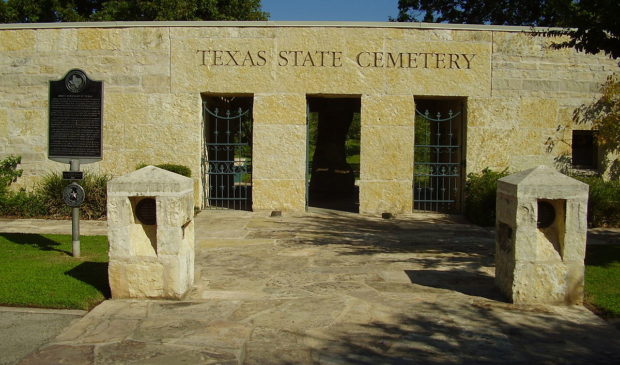East Austin poised to gain a new local historic district
Tuesday, May 21, 2019 by
Jessi Devenyns East Austin is on its way to anointing another local historic district. Amid support from dozens of neighborhood residents in the audience, the Historic Landmark Commission unanimously recommended the approval of the creation of a Robertson/Stuart & Mair Historic District.
The district is roughly composed of structures in and around Robertson Hill, a neighborhood generally bounded by East 11th Street in the north and East Seventh Street to the south. The Texas State Cemetery acts as the eastern border and the western edge is Embassy Drive by the French Legation.
With 59.5 percent of landowners in the area supporting the zoning change to local historic and 86 out of the 124 structures, or 69 percent, contributing to the period of significance between 1840 and 1965, the district had ample support for the rezoning. City code requires that 51 percent of landowners in a proposed district are in support of the zoning and that 51 percent of the structures are contributing.
Although the majority of residents were supportive of the district, Melvin Wrenn said one set of stakeholders was left out of the historic district process – the members of the Ebenezer Baptist Church at 1010 E. 10th St. “It’s a way of preserving and putting forward movement as it relates to discrimination,” he said.
Wrenn told the Austin Monitor that he is not against the historic zoning, but disagreed with the approach that the Guadalupe Association for an Improved Neighborhood took in creating the district without actively including the African American population and their structures. He told the Monitor that in the future, he would like to find a way to work collaboratively with GAIN to include Ebenezer Baptist Church and its congregants for the long-term development of the district.
What is now part of the Guadalupe neighborhood was originally the Pleasant Hill community, which was founded after the Civil War by newly freed black slaves. Although the community evolved to include immigrants from Germany, England, Ireland and Italy, the area became predominantly segregated in the 20th century as a consequence of the 1928 Koch and Fowler city plan.
Commissioner Terri Myers asked about the future possibility of amending the boundaries to include the Ebenezer Baptist Church in the district.
GAIN Secretary Mark Rogers noted, “We very much wanted Ebenezer and Our Lady of Guadalupe Church” to be part of the historic district. He attributed their exclusion to difficulties related to working with large organizations.
The GAIN association did work with the Austin Revitalization Authority to include a few properties on 11th Street that were in favor of the local historic district. However, after much discussion, there was one property on the district map that was presented to commissioners. Greg Smith, the president and CEO of the Austin Revitalization Authority, asked that the Haehnel Building at 1101 E. 11th St. be removed from the local historic district. The neighborhood association was amenable to the exclusion of this property from the district.
Myers cautioned GAIN to “ensure the consultant to strengthen that (integrity) argument a little bit more.” She clarified that she has “no question about the integrity of the neighborhood,” but that the justification for the integrity of the contributing structures “needs a statement that says how it meets the standards.” She suggested that the neighborhood association consult the U.S. Secretary of the Interior standards for determining the historical significance of a building.
With little discussion, the commission voted unanimously to recommend the approval of a historic district with the removal of the property at 1101 E. 11th St. from its boundaries. Commissioners Emily Reed, Witt Featherston, Ben Heimsath and Emily Hibbs were absent.
Emily Little, a resident of the neighborhood for over three decades, told commissioners, “We will all sleep a lot better at night knowing you’re looking over what happens in our neighborhood.”
The Austin Monitor’s work is made possible by donations from the community. Though our reporting covers donors from time to time, we are careful to keep business and editorial efforts separate while maintaining transparency. A complete list of donors is available here, and our code of ethics is explained here.
You're a community leader
And we’re honored you look to us for serious, in-depth news. You know a strong community needs local and dedicated watchdog reporting. We’re here for you and that won’t change. Now will you take the powerful next step and support our nonprofit news organization?










